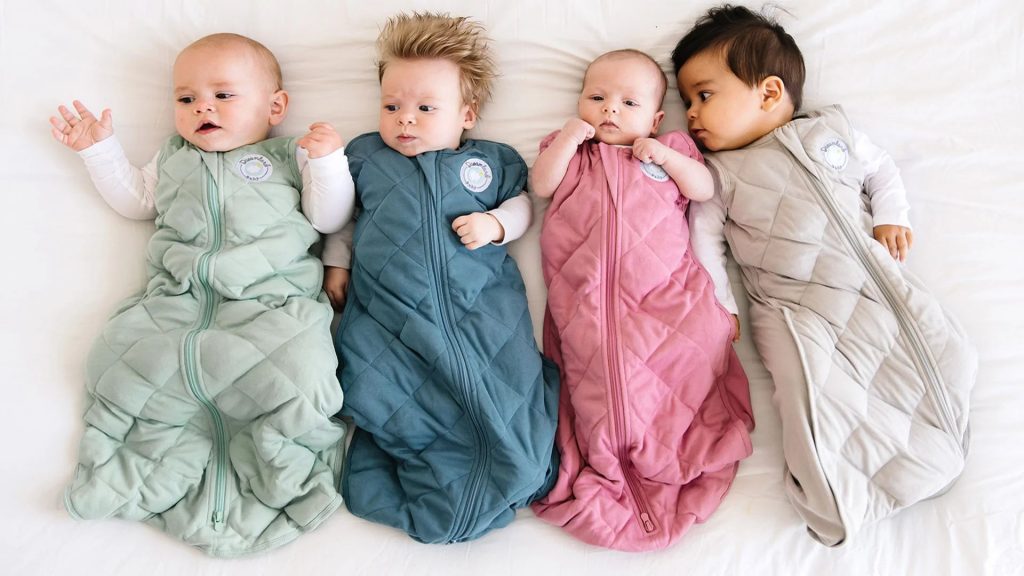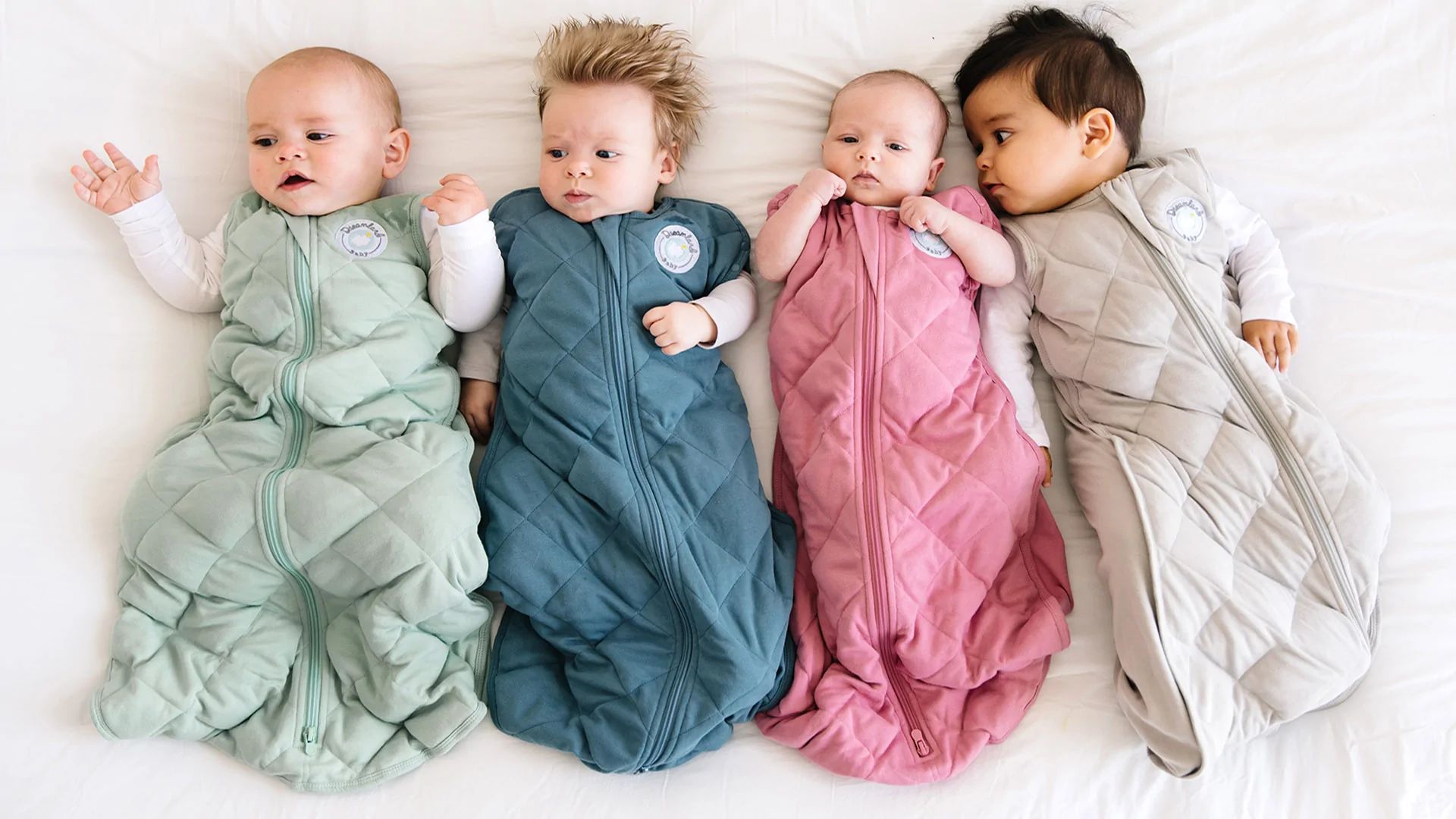Putting your baby to sleep can be challenging, especially if they are a fussy baby or seek comfort in their sleep. One excellent way to provide the little ones with comfort during their naps is by putting them in sleep sacks.
Parenting can be hard even when your child can tell you their problems and wants, but it is double that when they are just a baby that still cannot express themselves. Your baby cannot tell you when they are uncomfortable.
So, baby sacks can provide your child warmth and comfort while sleeping. If your baby is already using one, you may wonder how long do babies use sleep sacks. Let’s discover!

How Long Do Babies Use Sleep Sacks
Usually, parents put babies to sleep in sleep sacks until they are one or two years old. However, there is no set-in-stone cut-off period for using sleep sacks. Sleep sacks are safe to use until the baby is no longer comfortable in them.
Using Sleep Sacks
Parents can use sleep sacks to swaddle their baby from birth until toddlerhood, unlike swaddling, which should only last approximately four to five months (or until your baby starts to roll over, whichever comes first).
They are essentially wearable blankets that come in different thicknesses and fabrics. Sleep sacks help parents establish a safe sleep environment for their newborn babies and also give them peace whether their child is warm enough at night.
Since your child will toss and turn as they sleep, it is reassuring to know that they will always be sleeping at a comfortable temperature, even if they have kicked off the blankets numerous times that night.
Also, once babies start to turn over, parents panic about them falling from their cribs or beds. However, when the baby is put in a sleep sack, this risk is eliminated, and the baby will be safe, while the parents can ease their worries.
Even while you can use sleep sacks until your child is well into the toddler stage, you will eventually need to stop using the sleep sack.
A sleeveless sleep sack can keep your child warm and free up your hands so that they can stay safe in their crib if they roll over onto their stomach. When the baby outgrows its sleep sack, you can start using only a blanket for your baby.
Reasons for Using a Sleep Sack
There are many reasons why every parent should use sleep sacks for their babies, from comfort to safety. Some of the most important reasons for putting your baby in a sleep sack are:
Safe sleep
Honestly, you cannot pick a better sleep aid than a sleep sack when it comes to a safe sleep environment. Sleep sacks have been known that may help reduce the risk of Sudden Infant Death Syndrome (SIDS).
Comfort without risk
Using a sleep sack, you will not need a baby blanket, which can cause accidental suffocation. As everyone knows, baby blankets are soft and comfortable, but they pose a great risk, especially for babies up to 12 months. Most pediatricians advise parents to use baby blankets once the child is older.
Healthy hips
When you wrap your baby in a blanket or swaddle them, you might do it too tightly, and it may cause hip dysplasia in your baby, so you want to avoid hip dysplasia at all costs. You do not want to put your baby through the painful ordeal of wearing braces or undergoing surgery.
This is why it is better to use sleep sacks. They are baggier, giving your baby room to kick their legs.
Read more: How Long a Baby Can Sleep in a Bassinet

How to Transition Your Baby From a Sleep Sack to a Blanket
Gift them a special blanket
Start introducing the new blanket that will be your child’s bed during naps or downtime. You can even cover them while rocking your infant on the couch or in a rocking chair. This can lead to the baby forming an attachment to its special blanket.
Some parents begin this process months or even years in advance of when it might be appropriate to switch to using a blanket.
Cover them only with a top sheet
Start by covering your infant while they are still in the sleep sack if you have a very thin top sheet. They become accustomed to sleeping with something in the bed.
However, remember that you should not begin doing this until they are at least one year old, per the AAP’s safe sleep recommendations.
Utilize a smaller sleep sack
Similar to swaddles and pajamas, sleep sacks come in various fabrics and thicknesses. Check the fabric of the sleep sack you are currently using, then take a step back to start acclimating your child to sleeping without it. For instance, think about switching to 100% cotton instead of utilizing a micro-fleece wearable blanket.
Dress the baby in warmer pajamas
If you want to do this, remember to often regulate the temperature in your child’s room to ensure that they are adequately warm at night.
Keep in mind that there’s a strong chance your child, especially a toddler, will not be able to sleep with a blanket on all night. Dress them in enough layers to remain warm without a blanket so that they do not wake up chilly and uncomfortable.
Onesie underneath and fleece or cotton footie pajamas would be ideal. Everything will rely on the temperature of your baby’s room and how comfortable they are in general.
Also read: What Should Newborn Wear to Sleep in Winter?
Conclusion
In conclusion, as a parent, you want only the best for your baby, and getting quality sleep is extremely important for the development of the little one. According to many pediatricians, one of the best choices for good sleep is to use a sleep sack for your baby.
Sleep sacks give them enough space to move their little legs without the risk of rolling over and hurting themselves.
However, new parents may wonder how long do babies use sleep sacks. As I mentioned, a good cut-off period is around two years old, but still, it may vary based on your child’s needs and sleep habits.








